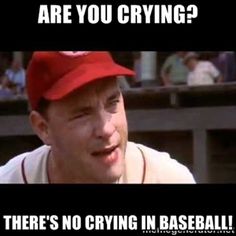 For years you could ask virtually any ESP or email industry expert a question about best practices and get the answer, “It depends.” What’s the best subject line length? It depends. What’s the best send time? It depends. What’s the best call to action? It depends.
For years you could ask virtually any ESP or email industry expert a question about best practices and get the answer, “It depends.” What’s the best subject line length? It depends. What’s the best send time? It depends. What’s the best call to action? It depends.
And that answer used to be an accurate one, although it was always frustrating. “Can I have an answer with some specificity in it?” “That depends.” Arrggh! Yet that used to be the only way we could answer a question because it really did depend on your audience, offer, brand, resources, etc.
Now, however, it’s no longer a valid answer because we have the ability to find out. We now have business intelligence (BI) for email, going far beyond trying to interpret the tea leaves of insight that ‘email metrics’ hints at—delving deeper and farther into developing knowledge via the analysis of the data: email analytics. And remember, it’s not just knowledge that is going to make you better as an email practitioner; it’s getting insight that is actionable. It still surprises me how many vendors and marketers in this space use the terms ‘metrics’ and ‘analytics’ interchangeably.
From “It depends” to “Let’s find out”
These days, the answer to any of those kinds of best practice questions should be, “Let’s find out.” That’s because the influx of data that marketers have has the potential to answer all of these questions when email analytics are used to discover the truths they seek.
By using true email analytics, marketers don’t have to look to industry studies or publications for suggested best practices that might or might not work for them. They can look to their own data and the results of their own testing to discover the best kinds of subject lines, send times, From name, personalization, calls to action, imagery, length, and so very much more.
Discovering your best practices
The real benefit to this kind of insight is that you discover the best practices that are specific to your organization. Sure, it could be that research shows Tuesday at 4:00 p.m. is the best time to send an email—and that might not hold true for you (especially when every other sender of email that read the same report you did starts sending then!). If you’re selling sporting equipment, it could be noon on Friday is the best day to send emails as your audience plans weekend outings. And it could be there’s a difference, and one segment has a better send time than another. For example, working moms might be more responsive to your email in the late evenings after the kids are in bed. They might have the same interest in a new stove as the retired school teacher checking emails during the middle of the day, but not the same receptivity at the same time.
And that’s just using send times as an example. There are so many different factors that you can test to really optimize your email marketing for your specific organization. For some suggestions on what to test, try the 25 things to test listed in Marketo’s blog, or Morgan Stewart’s list of 101 things you could be testing. And for some guidance in how to do A/B testing, download MailUp’s guide.
Commonsense practices vs. best practices
I’m not saying throw best practices out the window. Proven best practices have a relevancy, and you don’t have to start from scratch when you know you need targeted segmentation, relevant content, compelling subject lines, etc. But you could say these are simply commonsense practices as much as best practices, and that the truly best practices are the ones you discover for your organization.
So what are your organization’s best practices? Let’s find out.



